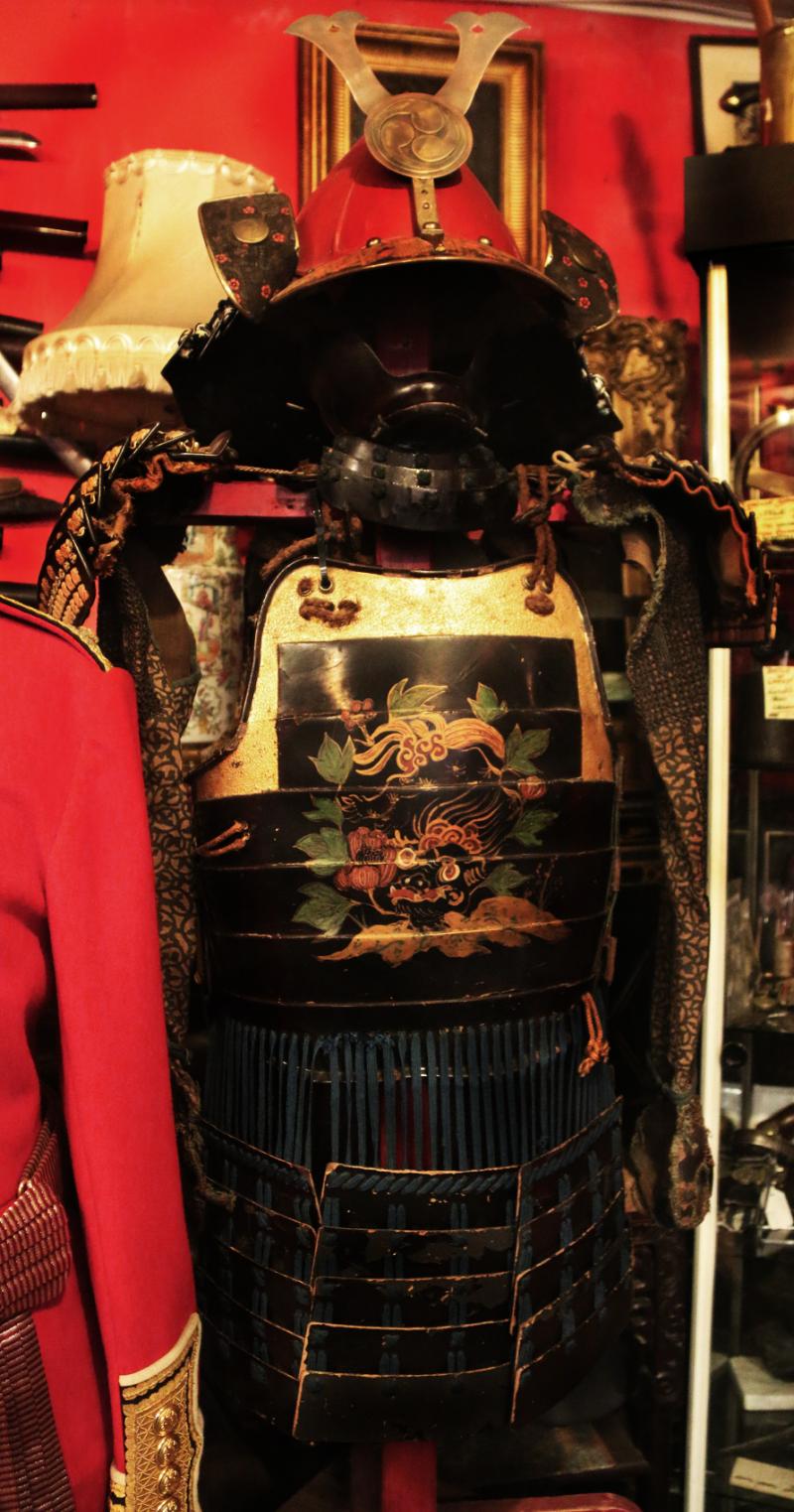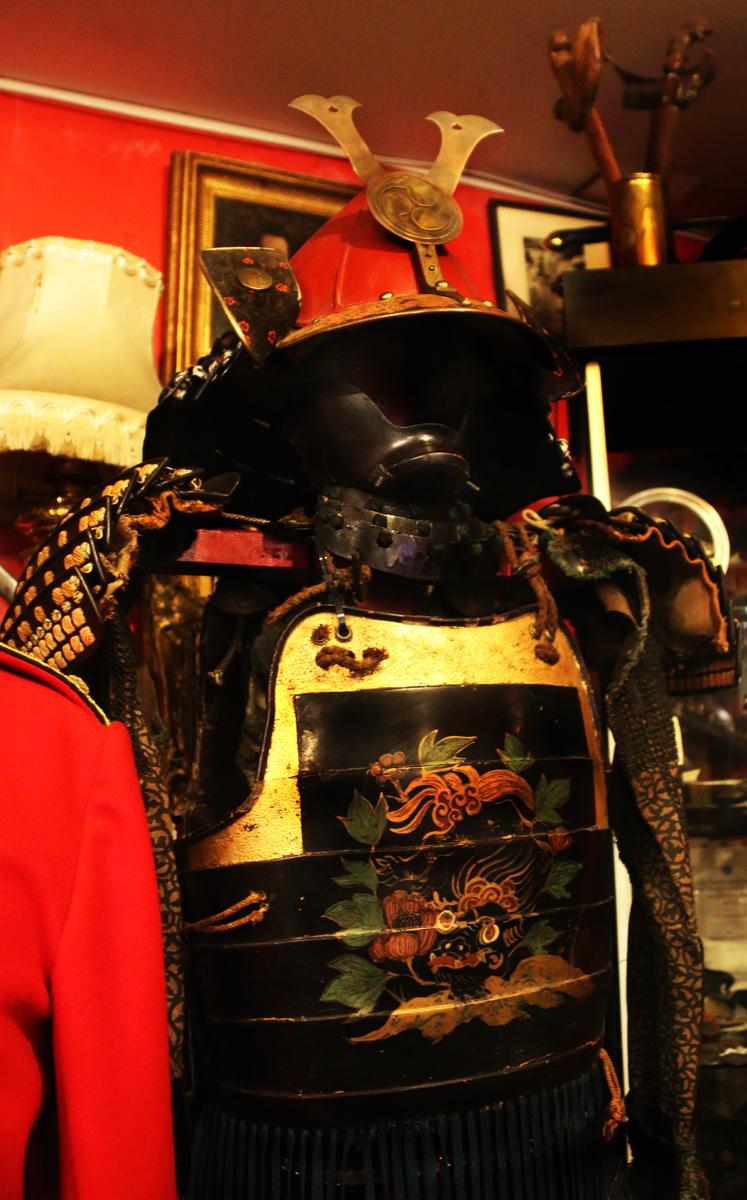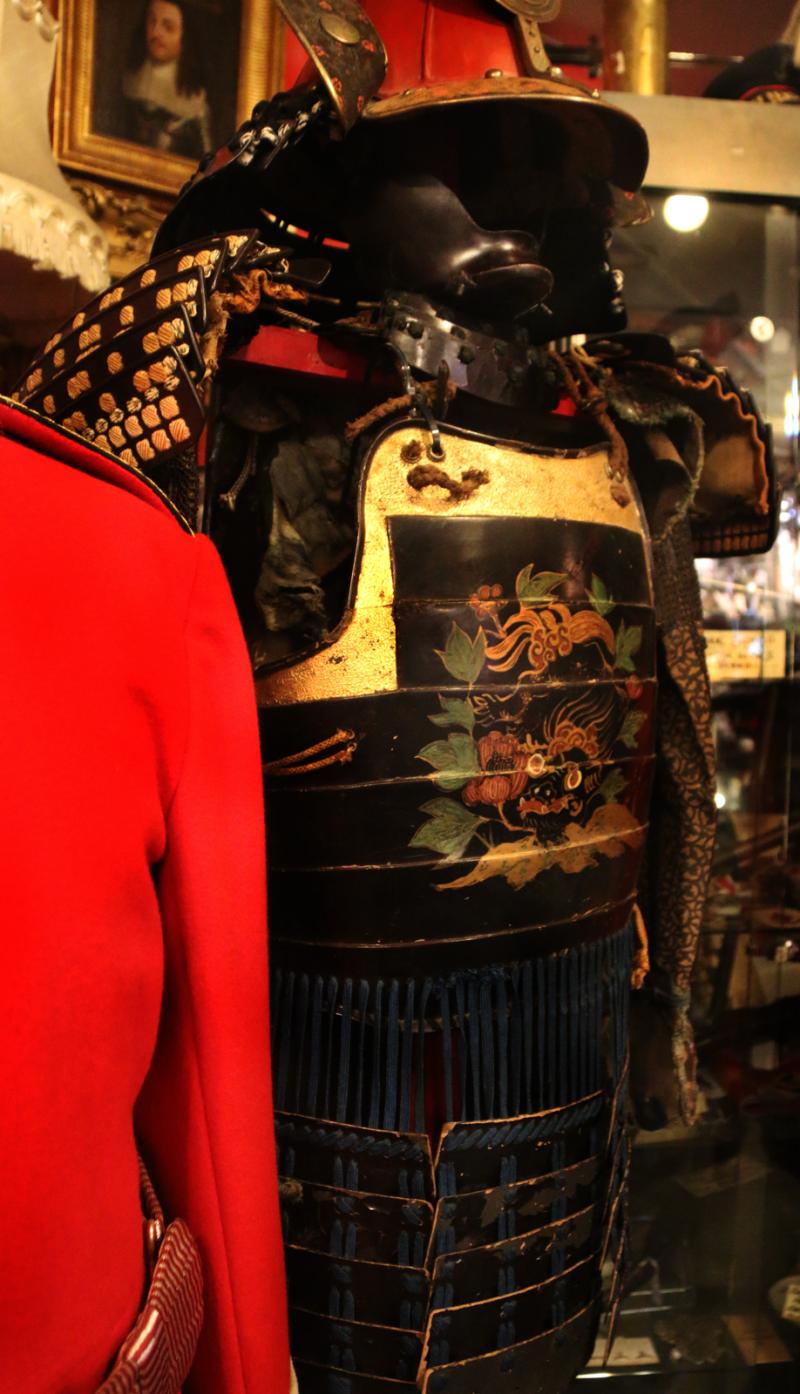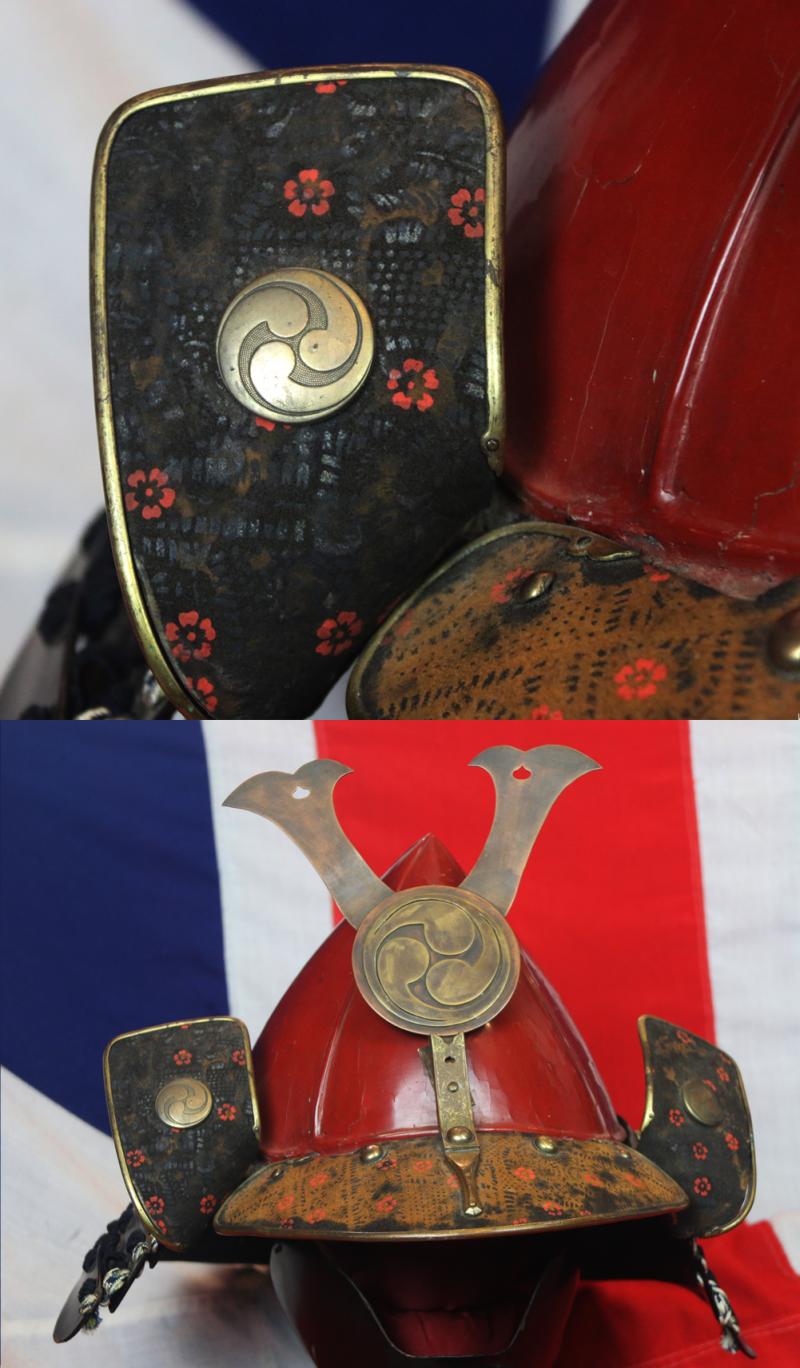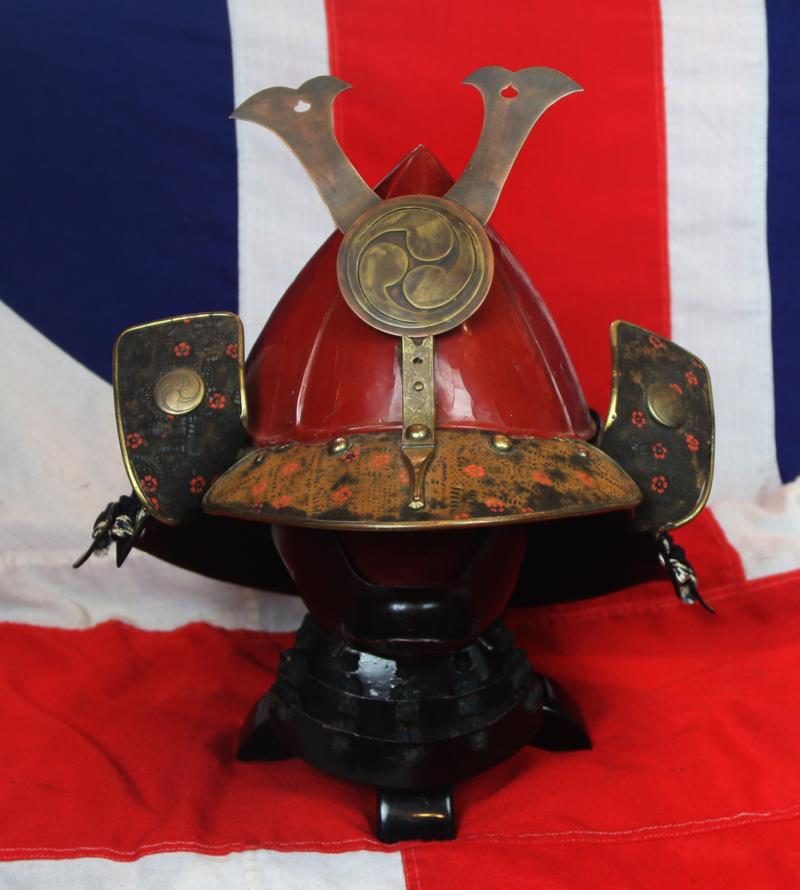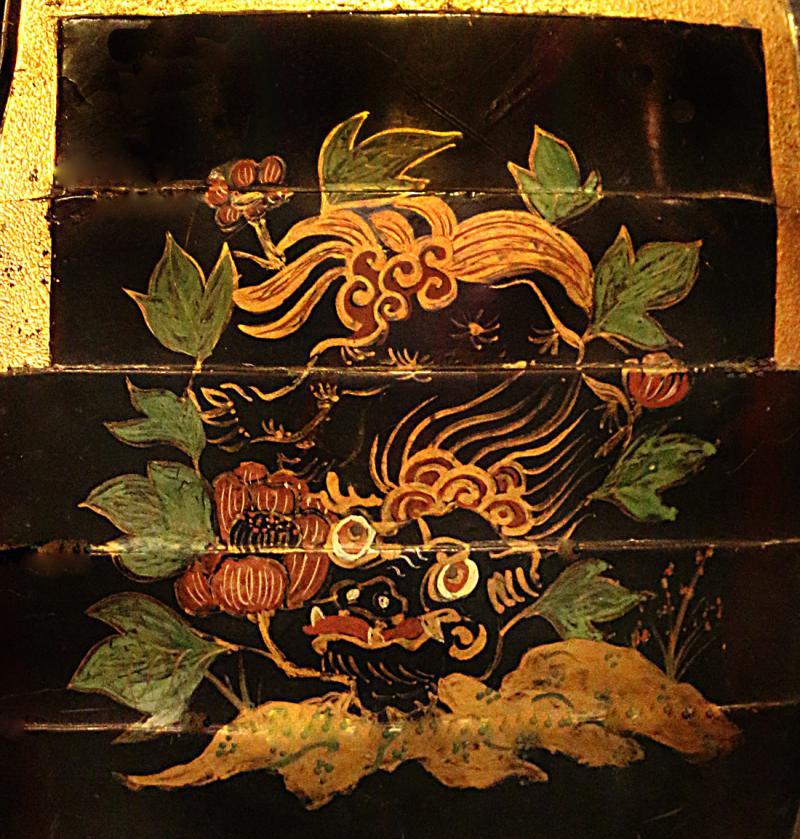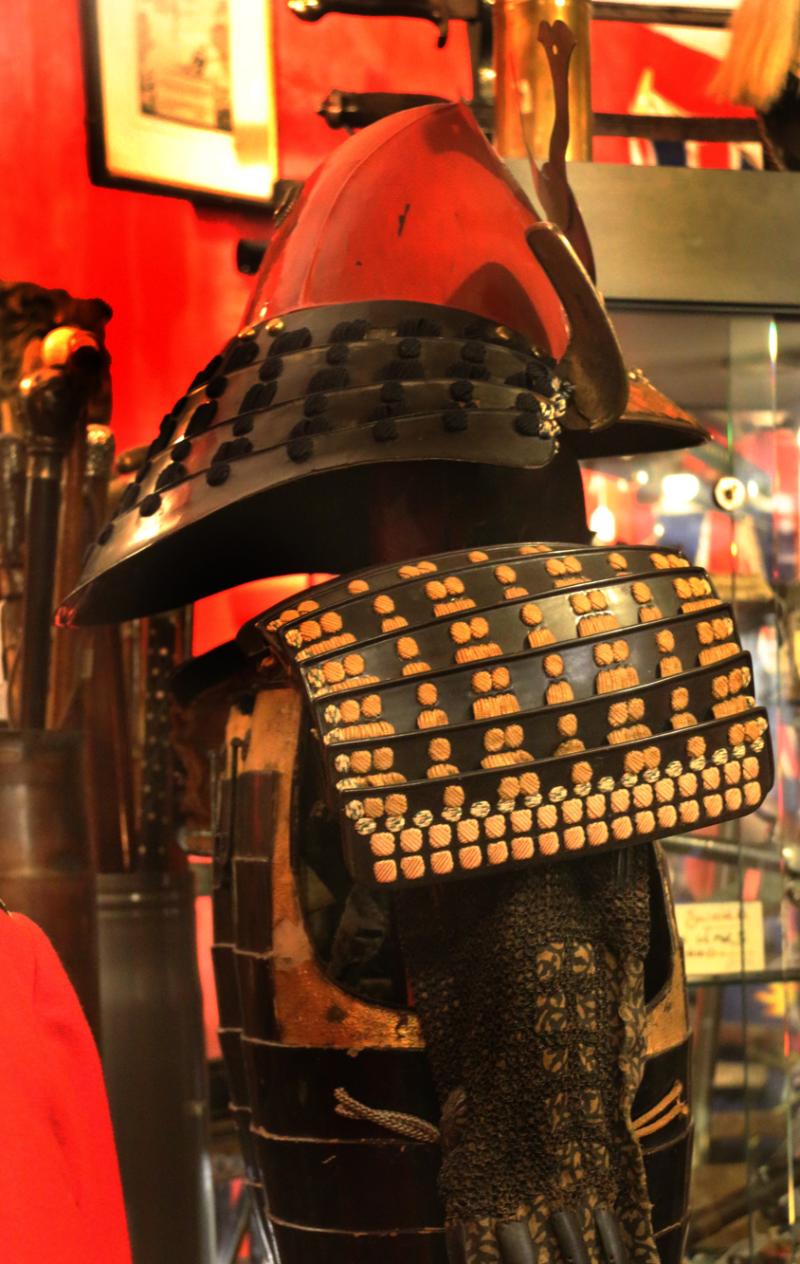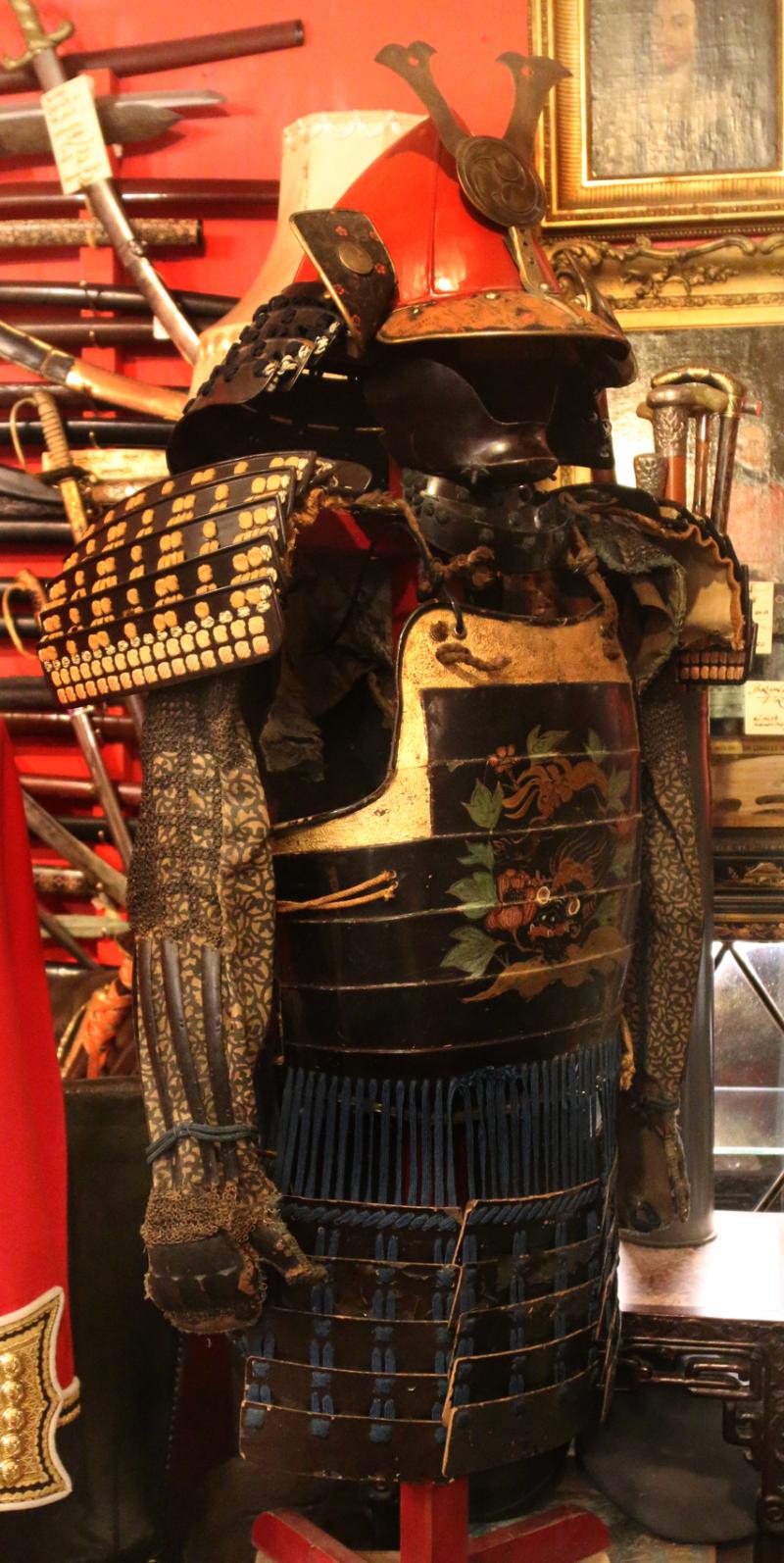An Original Antique Edo Period Suit of Samurai Gesoku Armour With gilt Tomoe Mon, of the Kobayakawa Clan. With Dragon Cuirass & Momonari Kabuto With Hanbo
Momonari kabuto ( peach-shaped skull), in the style influenced by European 'morion' helmets, with Mon, face armour, hanbo with tare throat protectors,, and datemono mandate of the Kobayakawa clan, and the mon of Kobayakawa Takakage (小早川 隆景, 1533 – July 26, 1597) was a samurai and daimyō (feudal lord) during the Sengoku period
Mid Edo armour, without kusazari, with beautiful urushi lacquered do a Yokohagi okegawa dō: Tosei dō made from horizontal plates decorated with a dragon. Cinnabar lacquer bachi helmet bowl, a kabuto of , with painted doeskin decorated mabizashi,
kusari kote arm sleeves, multi laced Ito sode shoulder guards, kusazuri, this is the plate skirt that protects the lower part of the body as well as the upper leg. It is laced together to the upper plates. For the armour made during the Heian and Kamakura periods, the skirt was made with both leather and iron. However, post-Muromachi Period armor saw a shift mainly to iron, with some being made from roasted leather.
The armour was made from a combination of materials, including leather, lacquered wood, and metal, and was designed to be both lightweight and flexible. The most iconic feature of the samurai armor is the kabuto, a helmet adorned with decorative features such as crests, horns, and a neck guard.
The mon as used by Kobayakawa Takakage was the third son of Mōri Motonari who was adopted by the Kobayakawa clan and became its 14th clan head. He merged the two branches of the Kobayakawa, the Takehara-Kobayakawa clan (竹原小早川氏) and Numata-Kobayakawa clan (沼田小早川氏). He became an active commander of the Mōri army and he with his brother Kikkawa Motoharu became known as the “Mōri Ryōkawa", or “Mōri's Two Rivers" (毛利両川). As head of the Kobayakawa clan, he expanded the clan's territory in the Chūgoku region (western Honshū), and fought for the Mōri clan in all their campaigns
At first he opposed Oda Nobunaga and Toyotomi Hideyoshi but later swore loyalty and became a retainer of Hideyoshi who awarded him domains in Iyo Province on Shikoku and Chikuzen Province on Kyūshū, totalling 350,000 koku. Hideyoshi gave him the title Chûnagon also appointed him to the Council of Five Elders but died before Hideyoshi himself.
Scholars agree that Japanese armour first appeared in the 4th century, with the discovery of the cuirass and basic helmets in graves. During the Heian period (794-1185), the unique Japanese samurai armour ō-yoroi and dō-maru appeared. The Japanese cuirass evolved into the more familiar style of body armour worn by the samurai known as the dou or dō, with the use of leather straps (nerigawa), and lacquer for weatherproofing. Leather and/or iron scales were also used to construct samurai armours, with leather and eventually silk lace used to connect the individual scales (kozane) of these cuirasses.
In the 16th century, Japan began trading with Europe, during what would become known as the Nanban trade. This was the first time matchlock muskets were imported, and as they became mass-produced domestically, samurai needed lighter and more protective armour. As a result, a new style of armour called tosei-gusoku (gusoku), which means modern armour, appeared. After the Battle of Sekigahara and the victory of the Tokugawa, a united Japan was created and entered the so-called 'peaceful Edo period', however, then from henceforth, the shoguns promoted rivallry between his daimyo fuedal clan lords, in order for their military ambitions, attention and suspicions to be upon each other, rather than the shogun. So there were no wars, as such, for over 250 years, but, hundreds of internecine battles, thus samurai continued to combat as usual, using both plate and lamellar armour. This practice, of a version of divide and conquer, of internal factions, rather than external forces, was adopted by many despots ever since, including Sadam Hussein of Iraq, extremely efficiently, and for over 20 years in his case.
Ōyamazumi Shrine is known as a treasure house of Japanese armour. It houses 40% of Japanese armour that has been designated as a National treasure and an Important Cultural Property. Kasuga Grand Shrine is also known as a treasure house of valuable armour
Some photos show the kabuto on a stand for demonstration purposes only stand not included
The kabuto bashi of red urushi lacquer has natural age surface crackling and small areas of loss, with a few original silk hanging cords lacking due to age.
Every single item from The Lanes Armoury is accompanied by our unique Certificate of Authenticity. Part of our continued dedication to maintain the standards forged by us over the past 100 years of our family’s trading, as Britain’s oldest established, and favourite, armoury and gallery
Code: 24994


